If you’re considering a tropical vacation, you may be trying to decide between these two regions, each located relatively close to the U.S. We’re here to help you decide with our comparison of the Caribbean vs. Central America.
Caribbean vs. Central America Quick Take
While there are some differences between the Caribbean and Central America, there are also lots of similarities—including the fact that most Central American countries have a Caribbean coastline. Both regions are excellent tropical vacation or honeymoon destinations, but Central America offers more diverse landscapes and tends to be less expensive.
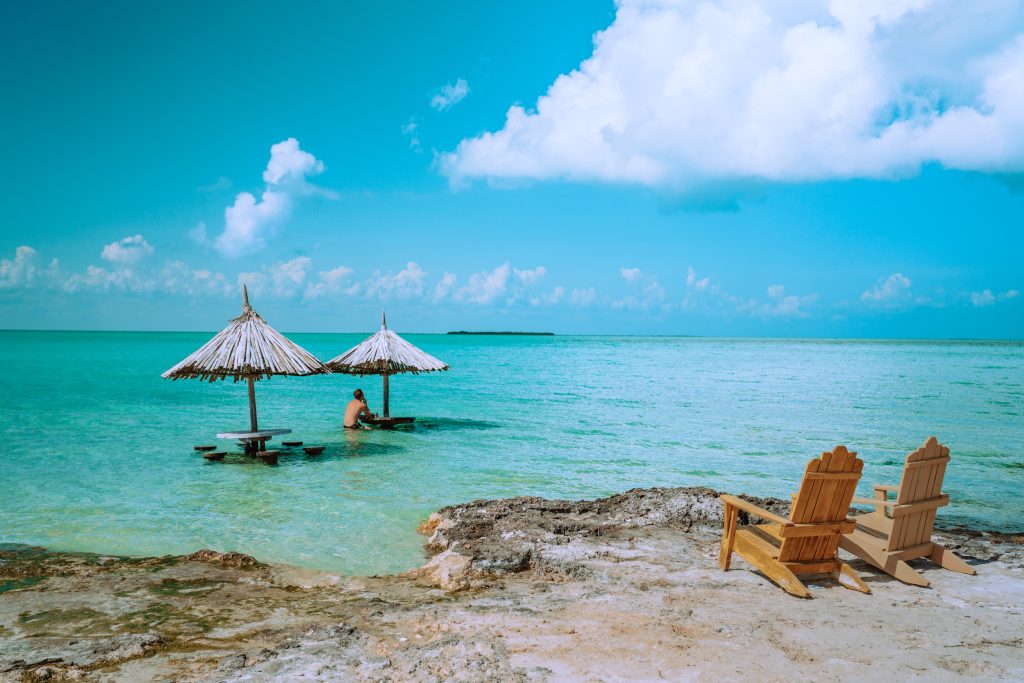
Caribbean vs. Central America Overview
The Caribbean features a variety of islands, while Central America is a subregion of North America made up of seven countries. These are Costa Rica, Guatemala, Belize, Honduras, El Salvador, Nicaragua, and Panama. All of the countries in Central America except for El Salvador also have a Caribbean coastline, so you can get the best of both worlds!
There are also some Central American islands in the Caribbean, such as Roatan.
There are a lot of similarities between the Caribbean and Central America due to their proximity, such as tropical weather with warm year-round temperatures, beautiful beaches, and lush foliage. However, Central America offers much more diverse landscapes, and the countries are much larger than Caribbean islands (with the possible exception of Belize).
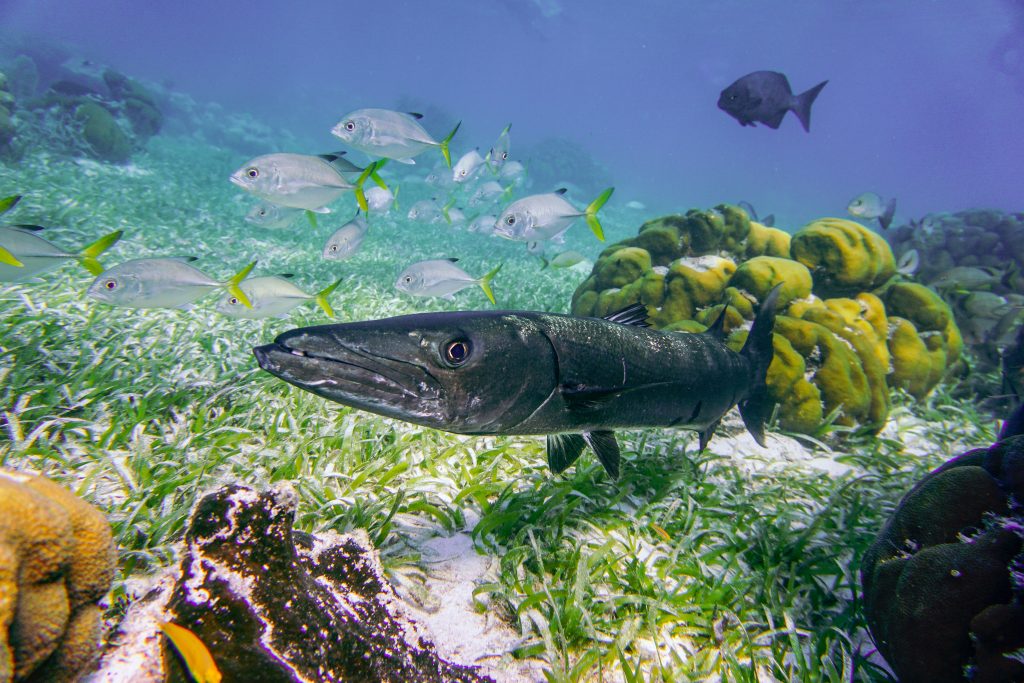
You can enjoy similar activities in both places including scuba diving, snorkeling, hiking, and adventure sports (but those will be more thrilling in Central America). Some Central American countries also offer a Pacific coastline.
Central America tends to be less expensive than the Caribbean. And while the culture and food in Central America are similar and come from a Spanish heritage, you will find a variety of other influences throughout the Caribbean.
You may also wonder what the difference is between the Caribbean vs. Latin America. Latin America refers to countries in the American region where Romance languages (languages derived from Latin) are the primary ones. The term commonly covers countries that were ruled by the Spanish, French, and Portuguese at some point, so this region includes Mexico and countries in Central America and South America as well as the Caribbean.
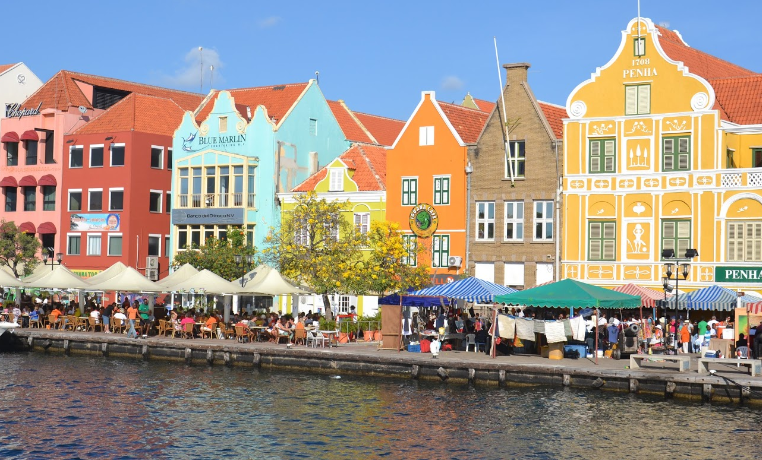
Caribbean vs. Central America Atmosphere
The Caribbean is generally laidback and has a rich culture that varies from island to island, depending on which European country colonized it. Influences include the indigenous population, African slaves, and European settlers from Britain, France, Spain, and Portugal. A few islands have U.S. influence as well, such as Puerto Rico and the US Virgin Islands.
Some Caribbean islands have a European feel, such as St. Martin or St. Barts, while others like Jamaica have their own slant on the Caribbean vibe. You will find a wide range of flavors, music, cultural traditions, festivals, languages, and architecture throughout the Caribbean. However, English is widely spoken.
Central American countries are mainly influenced by the indigenous peoples and Spanish colonizers, giving it a more cohesive feel. While life here can also be relaxed, much of Central America tends to have a more energetic and vibrant feel. Spanish is the primary language except for in Belize, which was a British territory.

Caribbean vs. Central America Things to Do
Both the Caribbean and Central America offer tons of things to do and are especially popular for outdoor activities.
The Caribbean is a top destination for watersports, including sailing, snorkeling, and scuba diving. Depending on where you go in Central America (coastline vs. interior), you can also find excellent watersports here. Many countries have coasts on both the Caribbean Sea and Pacific Ocean.
You can also go surfing at some Caribbean islands, but if you’re an experienced surfer you will probably want to consider destinations along the Pacific coastline of Central America.
The Caribbean offers white, golden, pink, and black sand beaches, but is best known for sugar-white sand and dazzling turquoise water. These types of beaches can be found on most Caribbean islands. (If this is what you’re looking for, check out our article on the 15 best Caribbean beaches.)
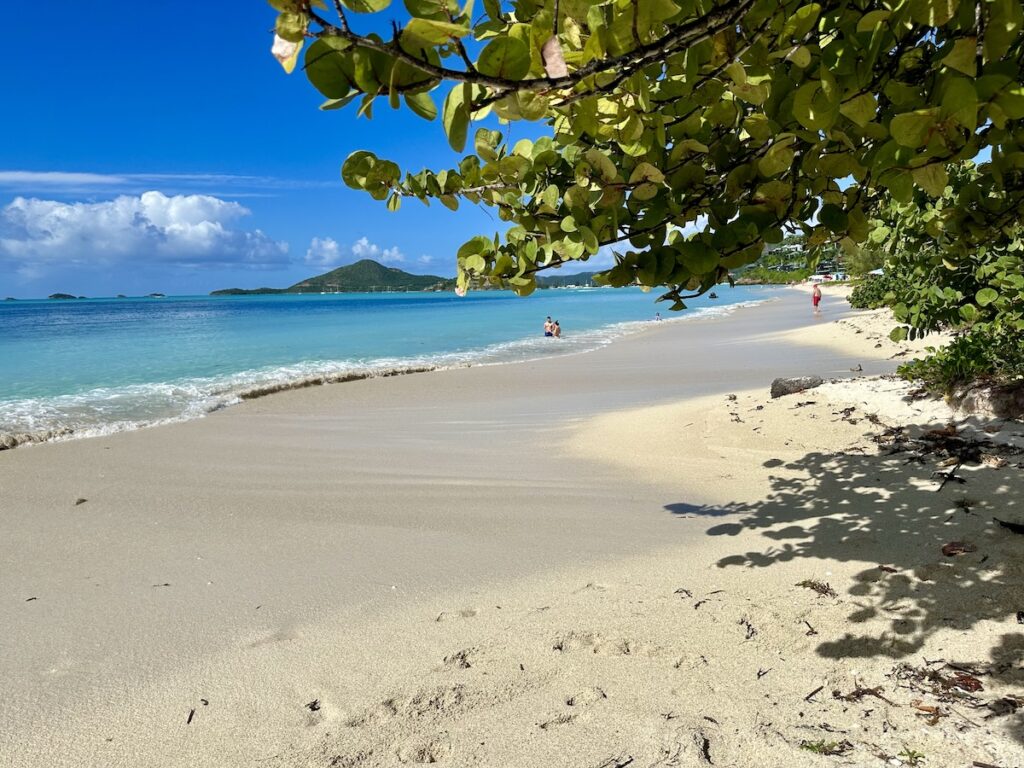
Beaches in Central America range from soft white or golden sand along the Caribbean to rocky cliffs or golden, gray, and white sand along the Pacific. Since the Pacific is much rougher, some beaches on that side are not good for swimming. However, as we mentioned before, the surfing is better. You can also see whales at certain times of the year. You will also be able to find much wilder, less-developed beaches in Central America.
While you can also hike in some of the Caribbean islands—especially those with volcanic peaks like St. Lucia—you will find much more hiking opportunities and challenging landscapes in Central America (such as cloud forests in Costa Rica). The same goes for adventure sports. Islands like Jamaica offer ziplining, ATV tours, and river rafting, but these activities in Central American countries will be much more thrilling. There is also a wider range of wildlife in Central America.
Both the Caribbean and Central America feature historic and cultural sites you can explore, but the sites in Central America are more numerous and older (such as Mayan ruins).
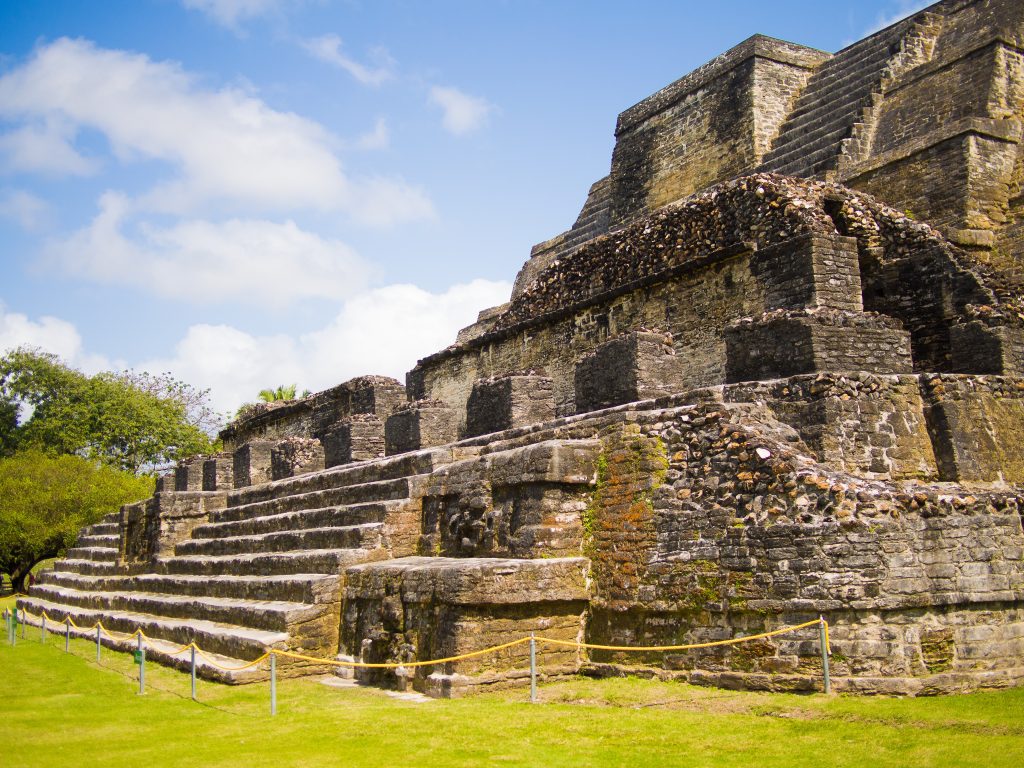
And while there are towns to visit in both the Caribbean and Central America, most of these on Caribbean islands are quite small, while there are both small towns and larger cities in Central America.
When comparing a Caribbean and Central America cruise, you’ll find there isn’t too much difference unless you’re comparing a Caribbean island cruise vs a cruise through the Panama Canal. Many Caribbean and Central America cruise itineraries overlap, and some cruises combine destinations in the Caribbean and Central American. There are even cruises that combine Caribbean islands and passage through the Panama Canal.
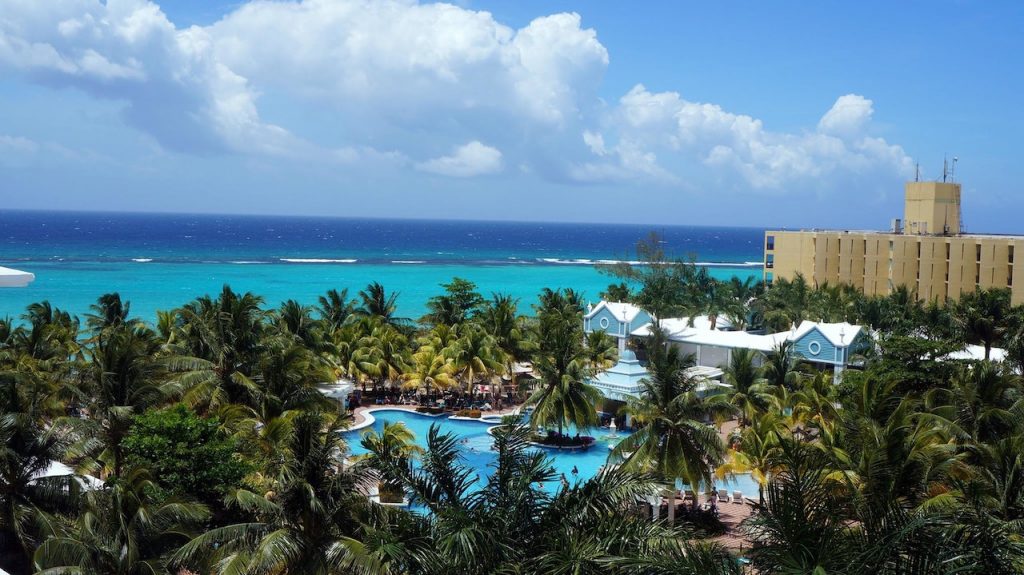
Caribbean vs. Central America Accommodations
The Caribbean offers a huge range of accommodation types, from inexpensive to super-swanky. There are hostels, hotels, condos, resorts, and AirBnBs, so it can be good for a budget getaway, a mid-range vacation, or a once-in-a-lifetime splurge like a honeymoon. In the Caribbean you can find affordable resorts, family resorts, adults-only resorts, all-inclusive resorts, luxury resorts, and even nude resorts.
Central America also offers a diverse array of places to stay, including all the types you can find in the Caribbean. There are a lot of eco-friendly options. And although there are upscale and expensive resorts, Central America tends to be much more affordable than the Caribbean. You can stay in the jungle, in the city, or on the beach—or combine two or more of these destinations in one trip.
There are resorts in both the Caribbean and Central America that feature overwater bungalows.

Caribbean vs. Central America Food
There are similarities and differences between food in the Caribbean vs. Central America.
Different Caribbean islands have different types of dishes depending on their history and whether they had Spanish, British, French, Portuguese, or Dutch settlers. Each island has its own special take on “Caribbean cuisine,” and includes fresh fruits and vegetables that are grown on that island as well as the types of seafood that are commonly found in surrounding waters. For example, the Bahamas is famous for conch and lobster, while Jamaica is known for its jerk chicken and ackee and salt fish.
Central American cuisine reflects the region’s cultural heritage of explorers from Spain and Portugal as well as the indigenous populations. There is plenty of fresh seafood as well as tropical fruit and local vegetables. Latin American dishes like spicy salsa, pupusas, and gallo pinto are common, but dishes vary depending on the specific country you’re in.
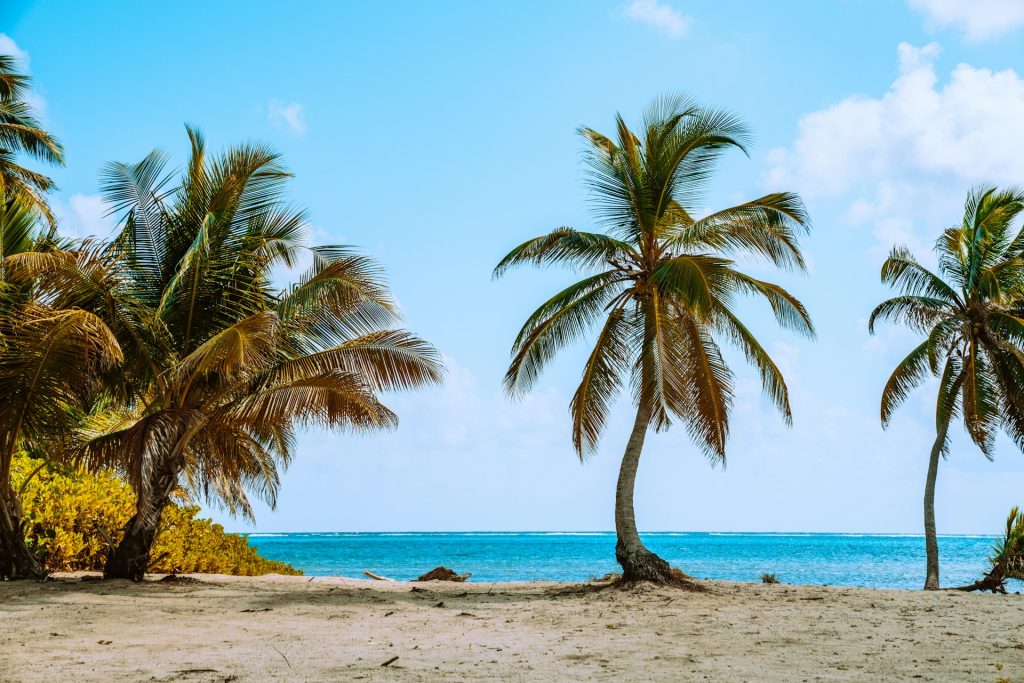
Caribbean vs. Central America Weather
While both the Caribbean and Central America are tropical destinations with similar weather, there are some differences to be aware of.
The Caribbean is warm all year round, but there are rainy and dry seasons. Temperatures tend to be milder during the dry season. While specific dates vary depending on the Caribbean island you choose, in general the wet season is during the summer.
Hurricane season runs from June to November, and this affects most Caribbean islands except for Aruba, Bonaire, Curacao, and Trinidad & Tobago. Barbados, while still technically in the hurricane zone, rarely sees storms,
The best time to visit the Caribbean for good weather is during the winter months of December, January, and February. For fairly good weather and lower prices, look at the spring.

The coastal areas of Central America are warm all year, and it can be quite hot and humid in the summer—often more so than Caribbean islands, which get trade winds. However, conditions vary by region and there is cooler weather in the higher altitude locations. In general, Central America’s dry season is December to April, and the rainy season is May to November.
Central American destinations on the Caribbean coast can be at risk for hurricanes. Panama, however, does not get hurricanes.

Caribbean vs. Central America Cost
The cost of a Caribbean vs Central American vacation will vary depending on several things, including where you’re traveling from, the time of year you go, and what sorts of activities and accommodations you book.
A Caribbean vacation can be inexpensive or super-pricey, depending on the island you choose, where you stay, what you do, and when you go. However, some islands are cheaper than others, and on most islands there are plenty of more affordable options. You can also often find great deals and discounts—especially if you go in the offseason.
Central America tends to be more affordable than the Caribbean, offering excellent value for the money. You can find less expensive accommodations, dining, activity, and transportation options, which makes this area popular with backpackers. However, there are also luxury resorts and upscale options as well.
Now that you’ve read our comparison of the Caribbean vs. Central America, where do you want to go next? Let us know in the comments! And if you’d like help planning your trip, feel free to reach out to one of our expert travel agents!

